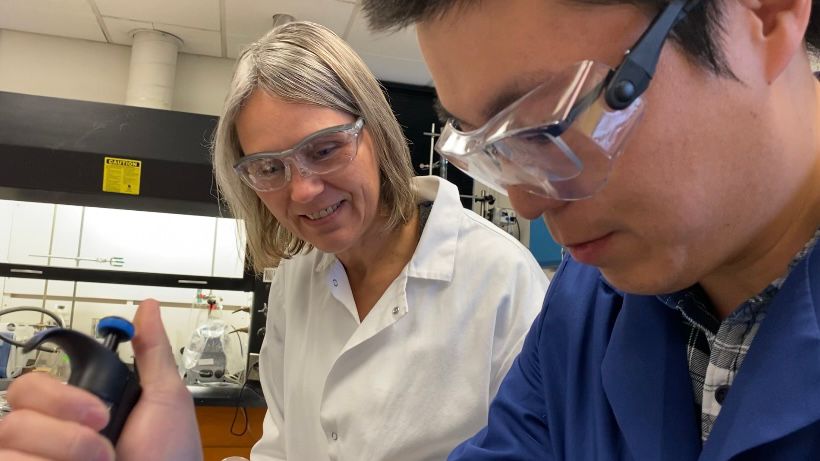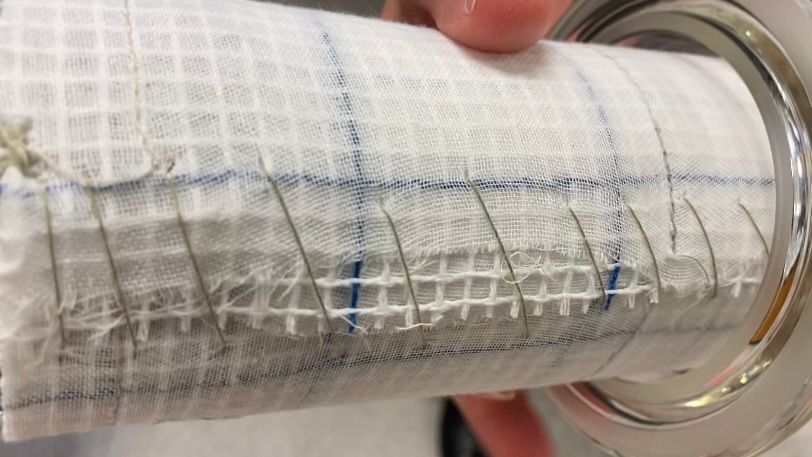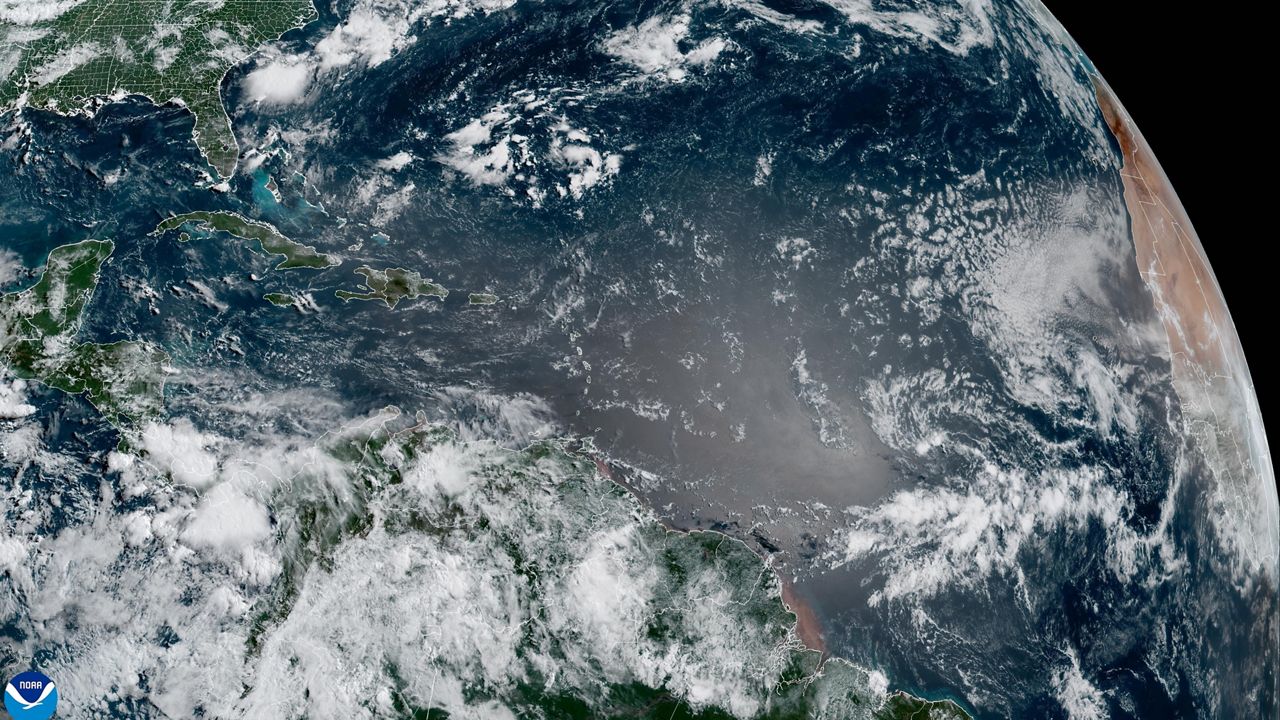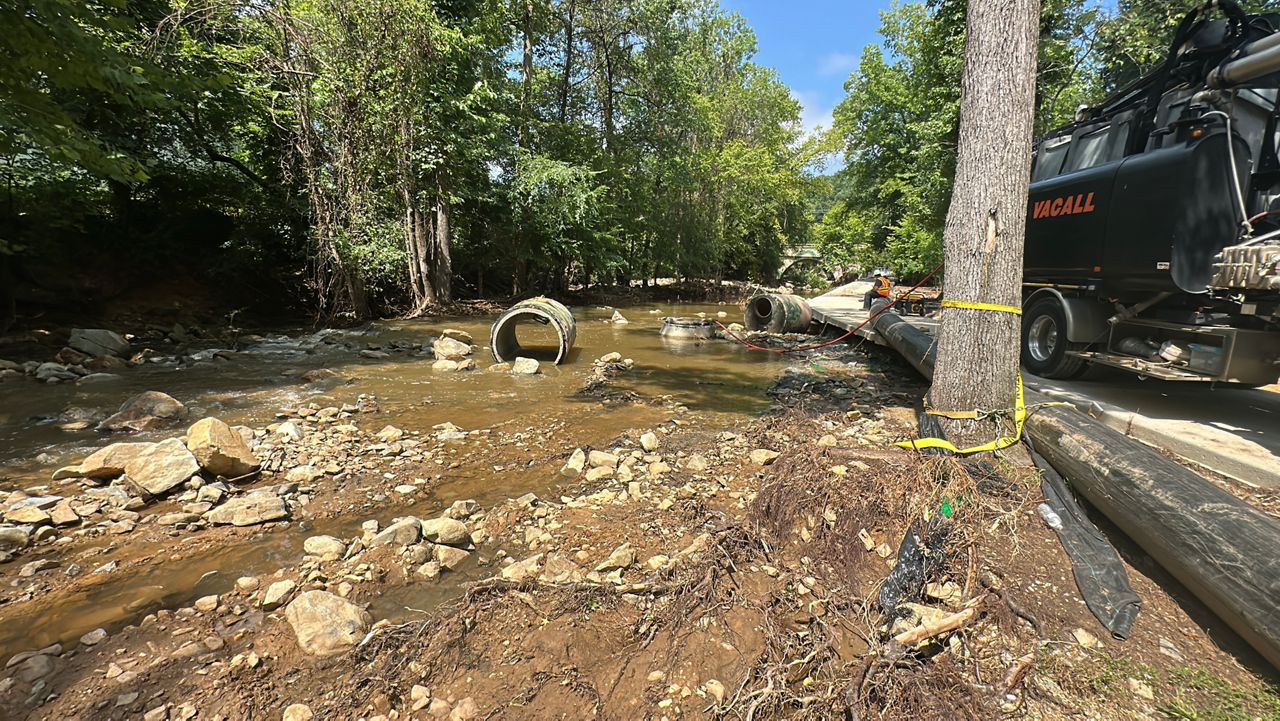RALEIGH, N.C. — North Carolina has a rich history with the textile industry, but the historic cotton mills have nothing to do with what’s happening in textile labs at N.C. State University. The research there could set the United States up to dramatically reduce its carbon footprint.
Textiles could rise to prominence in North Carolina again with the help of agriculture
N.C. State research looks to globally restructure the fertilizer industry
Current fertilizer manufacturing is a top producer of carbon dioxide emissions
Dr. Sonja Salmon is the principle investigator of Biocatalyst Interactions with Gases — otherwise known as the BIG collaboration. She and other researchers are building scale models of a gas-liquid scrubbing reactor that is capable of isolating specific gases with the help of a packing material similar in function to an air filter. She said that filter is made up of a fabric, which is capable of far more than being worn.

“People underestimate textiles a lot. You wear them, but you don’t really know how they work,” Salmon said. “We’re using basically the same things that give us comfort, only we’re now going to use that for a technical purpose.”
Salmon said the current Haber-Bosh process of producing fertilizer successfully converts nitrogen gas into ammonia, but accounts for 450 million tons of carbon dioxide emissions each year.
“That works really well, but unfortunately this process is extremely energy intensive. It runs at a very high temperature, a very high pressure, and it emits a lot of CO2 [carbon dioxide],” Salmon said. “We believe that the answer is sitting right with nature itself.”
She shared that an enzyme known as nitrogenase has the natural capability to convert nitrogen to ammonia without the high carbon output. Salmon said their goal is to harness that and turn it into an industrial process.
According to Global Market Insights, the worldwide fertilizer market was valued at over $193 billion in 2021 and is projected to reach over $240 billion by 2030.

“The demand for fertilizer is going to increase, both because of population growth, and if we want to move more toward a bio-economy where we rely on agricultural resources, we need to help the plants grow,” Salmon said.
The research is a collaboration with a university in Denmark, the global leader in sustainability. They are currently very early in the research process. The collaboration began in September and will run for the next five years. Salmon said their goal at the end of the project is to have fully functional, life-size prototypes.
“We need to do it for the long-term sustainability of the planet and these things take time, so we need to start now,” Salmon said.









